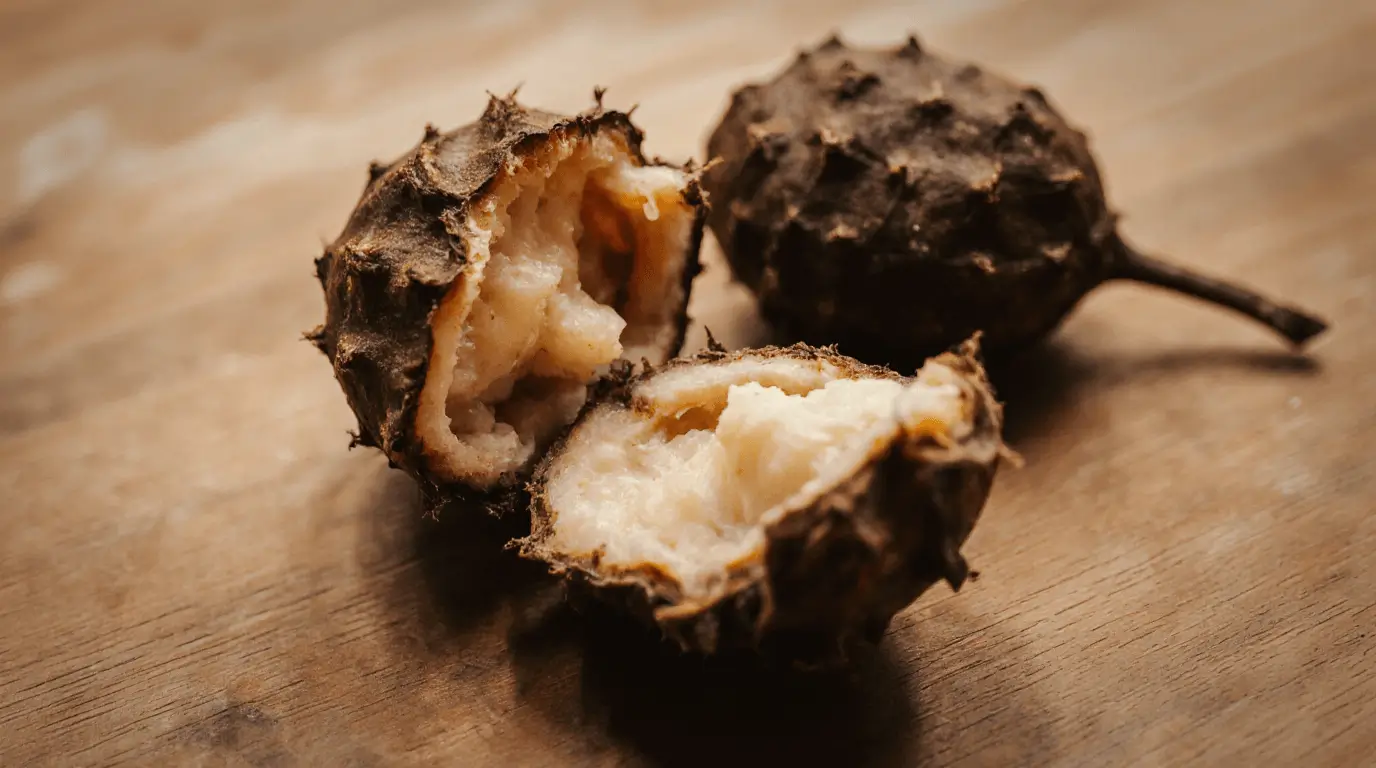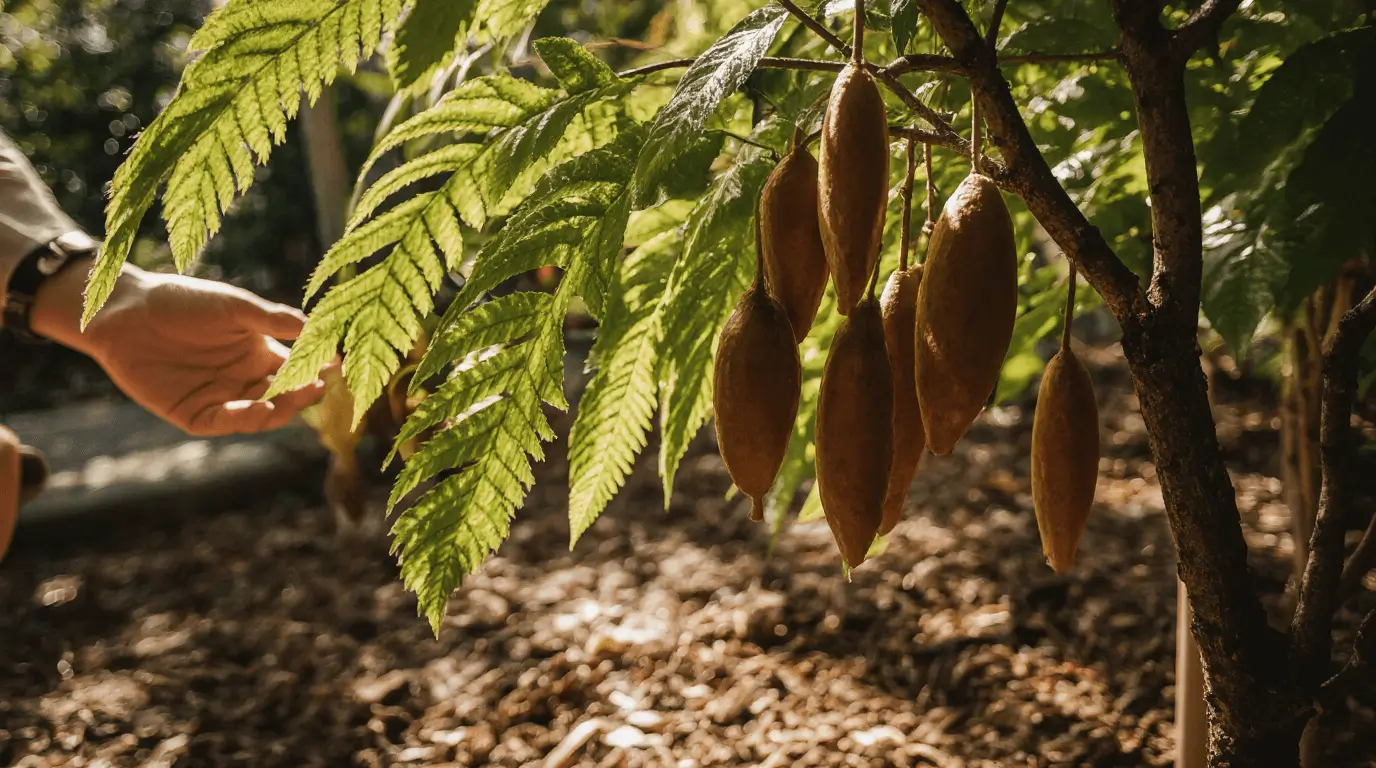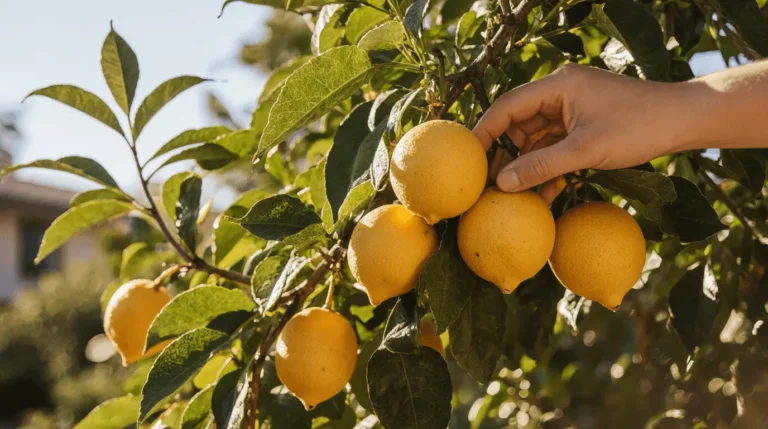The tamarind tree (Tamarindus indica) has always fascinated me for its unique beauty and usefulness. Found mostly in tropical regions, this tamarind plant grows into a stunning, shady tree that also offers delicious tamarind fruits. The tart fruits are loved worldwide for their taste and versatility in recipes and traditional treatments. From personal experience, the secret to a strong, healthy tamarind tree lies in understanding its growth, planting, and tamarind plant care needs. Many gardeners are drawn to this tree because it’s both practical and ornamental, bringing life to any garden with its lush canopy.

If you want to grow high-quality plants, you’ll need to focus on proper watering, fertilization, and regular pruning. A well-draining soil, ample sunlight, and the right nutrients are essential for successful cultivation. I once got a sapling from Everglades Farm, and it quickly adapted to my tropical climate with minimal effort—proof that following a few essential tips can make all the difference. Whether you’re growing for harvesting, enhancing your garden, or joining the growing popularity of tamarind cultivation, this tree rewards your care with lasting shade, beauty, and fruit that connects deeply to ancient cultures and natural wellness traditions.
Tips to grow and care for Tamarind Trees:
Selecting the Right Location
When I first began planting a tamarind seed, I quickly realized that the location can make or break your success. Tamarind trees and tamarind plants naturally thrive in tropical and subtropical areas where the temperature rarely drops below 10°C. These resilient trees can withstand short periods of drought, but they are quite susceptible to cold. Before starting the growing process, take time for proper consideration of all factors such as soil, sunlight, and environmental conditions that will support strong growth.
From my own experience, it’s helpful to assess your soil before planting, especially checking the pH range between 4.5 to 9.0 to ensure it drains well. The early stage of growth requires close attention to detail because even slight imbalances in soil or climate can affect the cultivation of these tropical trees. Once the right balance is achieved, your tamarind plants will grow steadily, adapting beautifully to their surroundings with minimal effort and long-lasting strength.
Planting Tamarind Trees
Starting with tamarind seed planting can be a rewarding experience if done with care and patience. Choosing the right tamarind tree variety helps ensure better fruit yield and a healthy tamarind tree. From my own gardening experience, both seed propagation and grafting have their unique advantages—while growing from seeds takes time, grafted trees often result in faster fruit production. Before starting, I like to begin by soaking the seeds for a few days and then placing them in a seed tray or tiny pot filled with potting soil. The depth should be about twice the seed’s width. Keep the soil consistently wet but not soggy, and place the pot in a warm, sunny place to encourage germination, which usually takes 1–2 weeks.
Once the seedlings grow about 4 inches tall, they can be transferred to their permanent position. Dig a hole twice the size of the root ball, and backfill it with dirt, pressing gently to remove air pockets. Regular watering is pivotal, but make sure not to overwater, as this can cause root issues. During this phase, monitoring for pests and diseases is essential. Each method of growing—whether from seed or graft—comes with its own nuances, but with regular care, your tamarind will thrive and reward you with a rich harvest of tamarind tree fruit.

Essential Care Tips for Tamarind Trees
To help your tamarind tree and tamarind plant grow healthy, make sure it’s properly planted and follow each stage of care and steps from seeds with patience and attention.
Watering Requirements
When planting tamarind trees, give them regular watering for the first few months until they’re established, then switch to deep watering using drip irrigation, an ideal method that helps develop an extensive root system by delivering water directly to the root zone in a way drought-tolerant trees naturally prefer.
Fertilization
Although tamarind trees can tolerate poor soils, they need fertilizers to ensure optimal growth and a better yield. I’ve found that using a balanced, slow-release fertilizer applied during the growing season works best to provide the necessary nutrients the trees need to thrive. It’s crucial to follow the recommended dosage mentioned on the fertilizer package, and to fertilize regularly for consistent results and long-term health of the plant.
Pruning and Shaping Tamarind Trees
Pruning plays a vital role in maintaining the health and natural shaping of a tamarind tree. From my experience, removing dead branches and diseased branches early prevents the spread of disease and helps promote better air circulation and sunlight penetration within the canopy. The best time to prune is during late winter or early spring, just before new growth begins. Regular pruning keeps the tree strong and enhances its potential for long-term productivity and beauty.
Dealing with Pests and Diseases
Even with excellent care, tamarind trees can sometimes fall victim to pests like mealybugs or diseases such as root rot. From my own gardening experience, a regular inspection of the tree is essential to catch early signs of ill health. When problems appear, taking quick action and seeking expert advice can make a big difference. Both organic pest control and chemical pest control methods can efficiently manage these issues, keeping your tamarind strong and thriving year-round.
Mulching and Weed Control
From my own experience, mulching plays a big role in keeping tamarind trees healthy. Applying organic mulch like compost or shredded bark around the base of the tree not only retains moisture but also aids in weed control and water conservation. This simple planting technique prevents weeds from competing for nutrients and helps prevent rotting when done correctly. Always ensure the mulch doesn’t come in contact with the tree trunk, as this step prevents excess moisture buildup and supports long-term tree health.
Harvesting Tamarind
In Florida, harvesting tamarind trees is a truly rewarding process that I always look forward to each season. The signs of ripe tamarind fruit usually include a brown, brittle pod and pulp that feels soft and pliable to the touch. For tall trees, using a long-handled fruit picker can make the task much easier, allowing you to collect the fruit gently without damaging the branches.

Read Also: Tropical Fruit Trees: Grow Exotic Paradise at Home (Grow Guide)
Conclusion
Growing and caring for a tamarind tree is a fulfilling experience that blends tropical beauty with practical rewards. By focusing on essential steps such as proper watering, fertilization, pruning, and pest management, you can ensure your tamarind plant thrives year after year. The key lies in choosing the right location, providing well-draining soil, and maintaining consistent care throughout the growing stages. Whether you’re cultivating from seeds or grafts, the patience you invest will be returned with lush foliage, shade, and flavorful fruits that enrich both your garden and your table. With dedication and the right approach, your tamarind tree care journey will be both enjoyable and fruitful.
FAQs
Q1: How often should I water my tamarind tree?
In the early months, water the tamarind plant regularly to help establish strong roots. Once mature, switch to deep watering every 7–10 days to encourage drought tolerance.
Q2: What type of soil is best for tamarind trees?
Tamarind trees thrive in well-draining sandy or loamy soil with a pH range between 4.5 and 9.0. Avoid waterlogged soil to prevent root rot.
Q3: When should I prune my tamarind tree?
The ideal time to prune tamarind trees is during late winter or early spring, just before new growth starts. This promotes healthy structure and better fruit production.
Q4: How long does it take for a tamarind tree to bear fruit?
Tamarind trees grown from seeds may take 6–8 years to bear fruit, while grafted trees can start producing within 3–4 years under good care.
Q5: What are common pests or diseases that affect tamarind plants?
Common problems include mealybugs, root rot, and fungal infections. Regular inspection, proper drainage, and organic pest control can help prevent these issues.
Q6: Why is mulching important for tamarind trees?
Mulching helps retain soil moisture, control weeds, and improve soil quality. Use organic mulch like compost but keep it away from the trunk to avoid rot.
Q7: How can I tell when tamarind fruit is ready to harvest?
Harvest tamarind when the pods turn brown and brittle and the pulp inside feels soft and pliable. Use a fruit picker for tall trees to avoid damaging branches.




